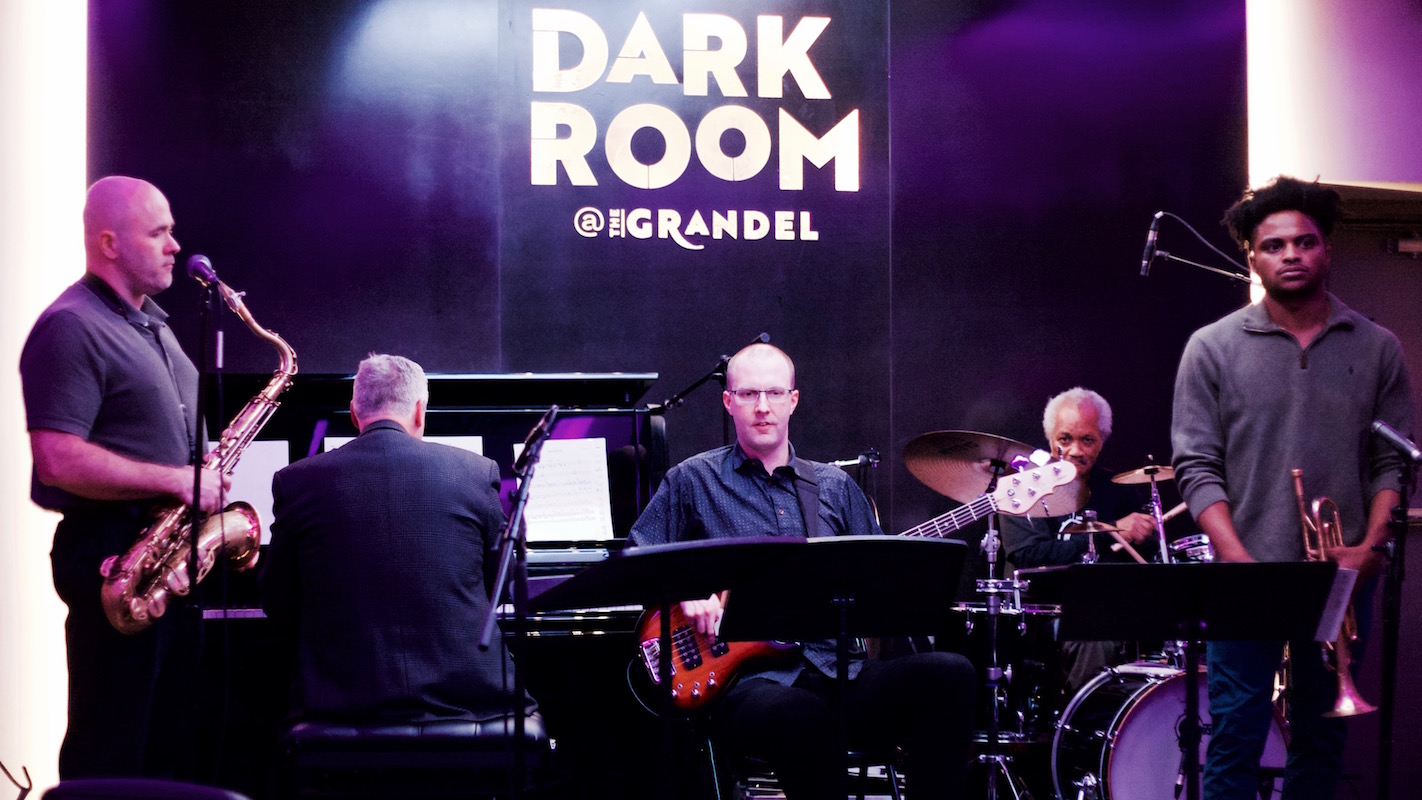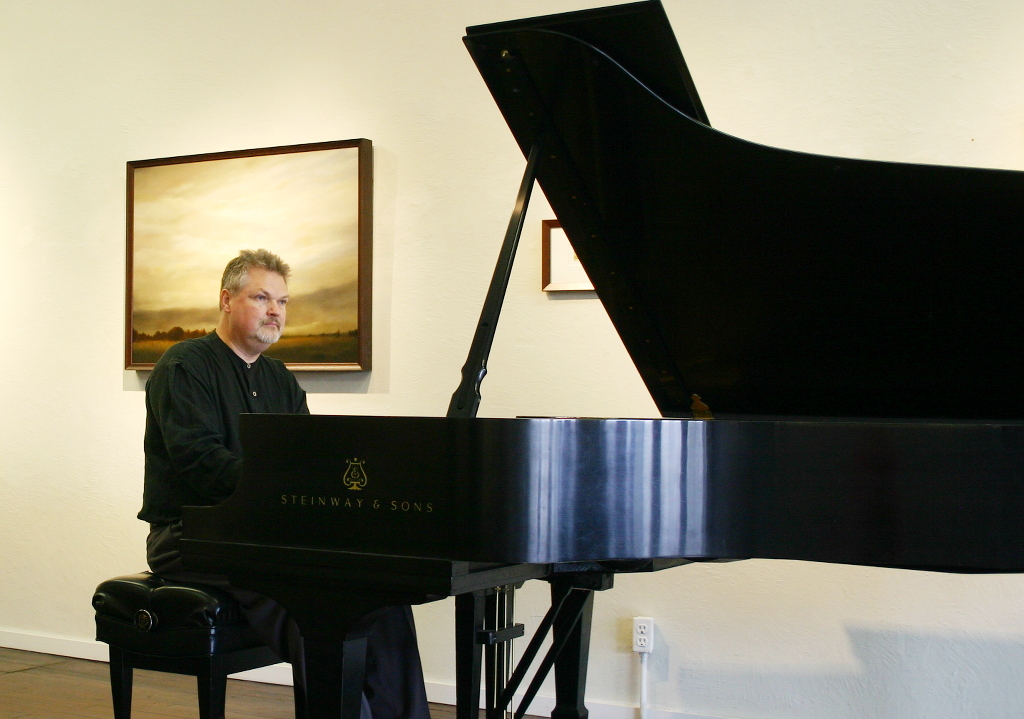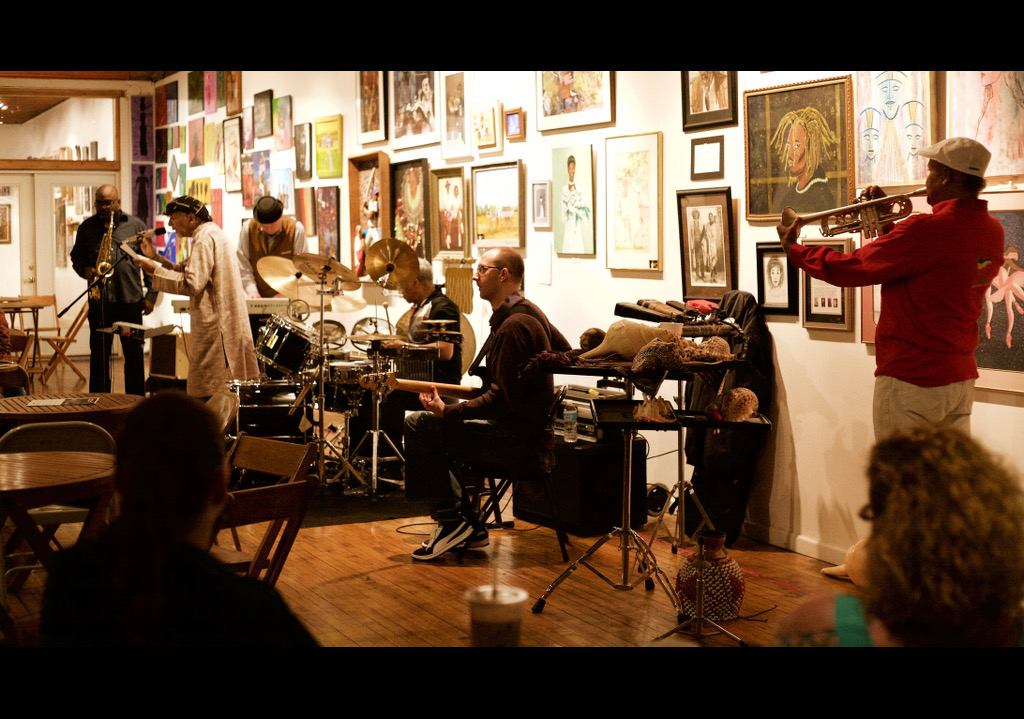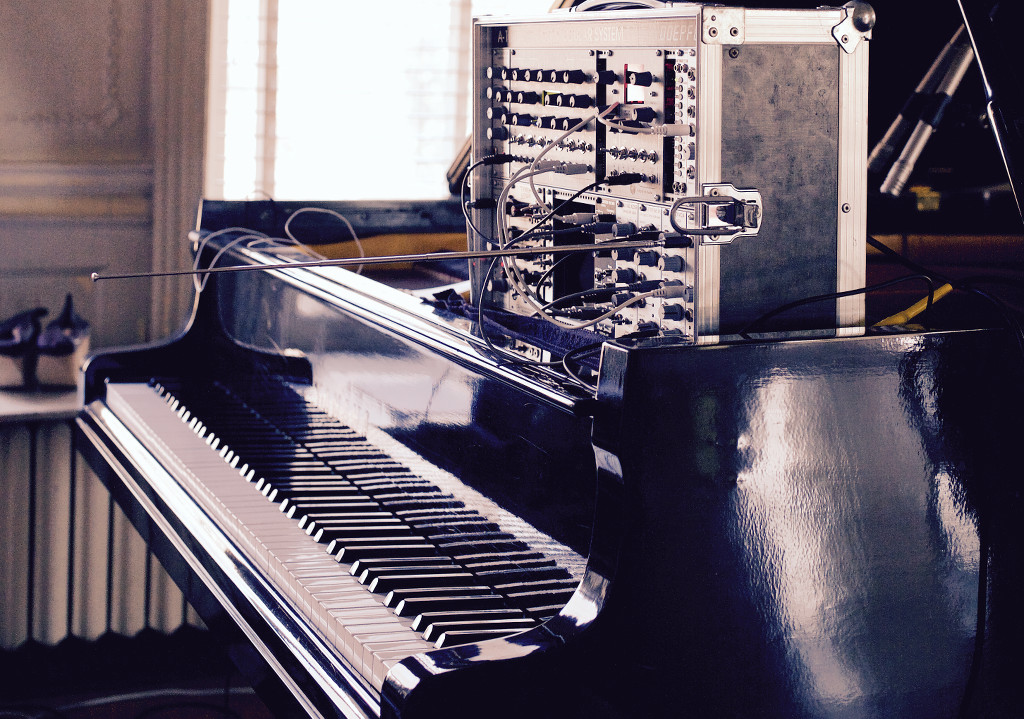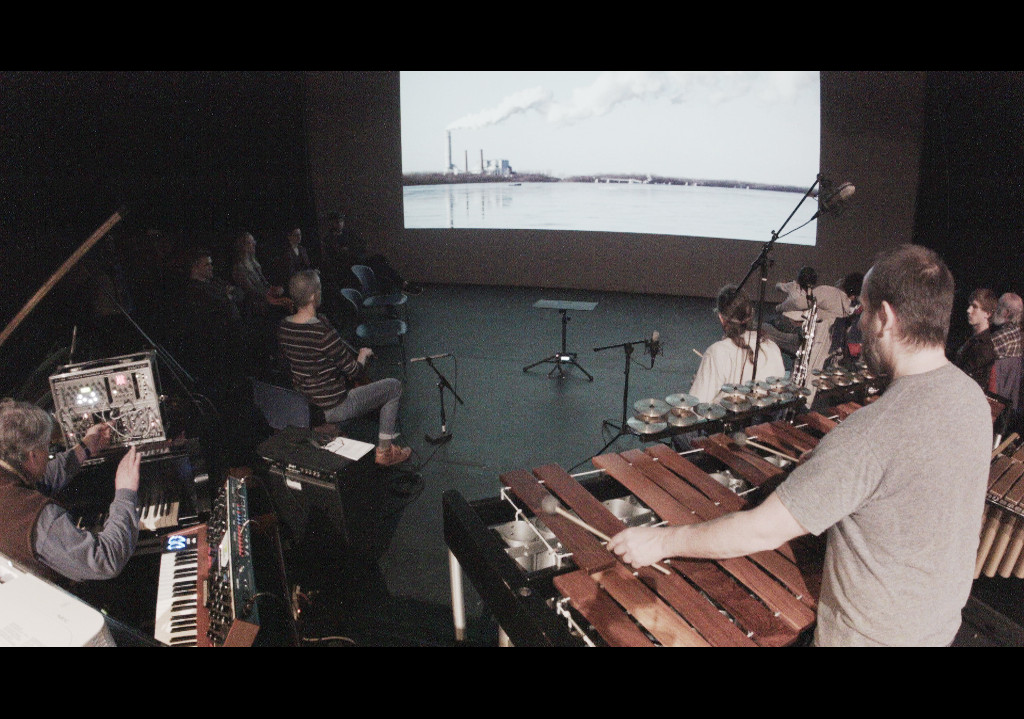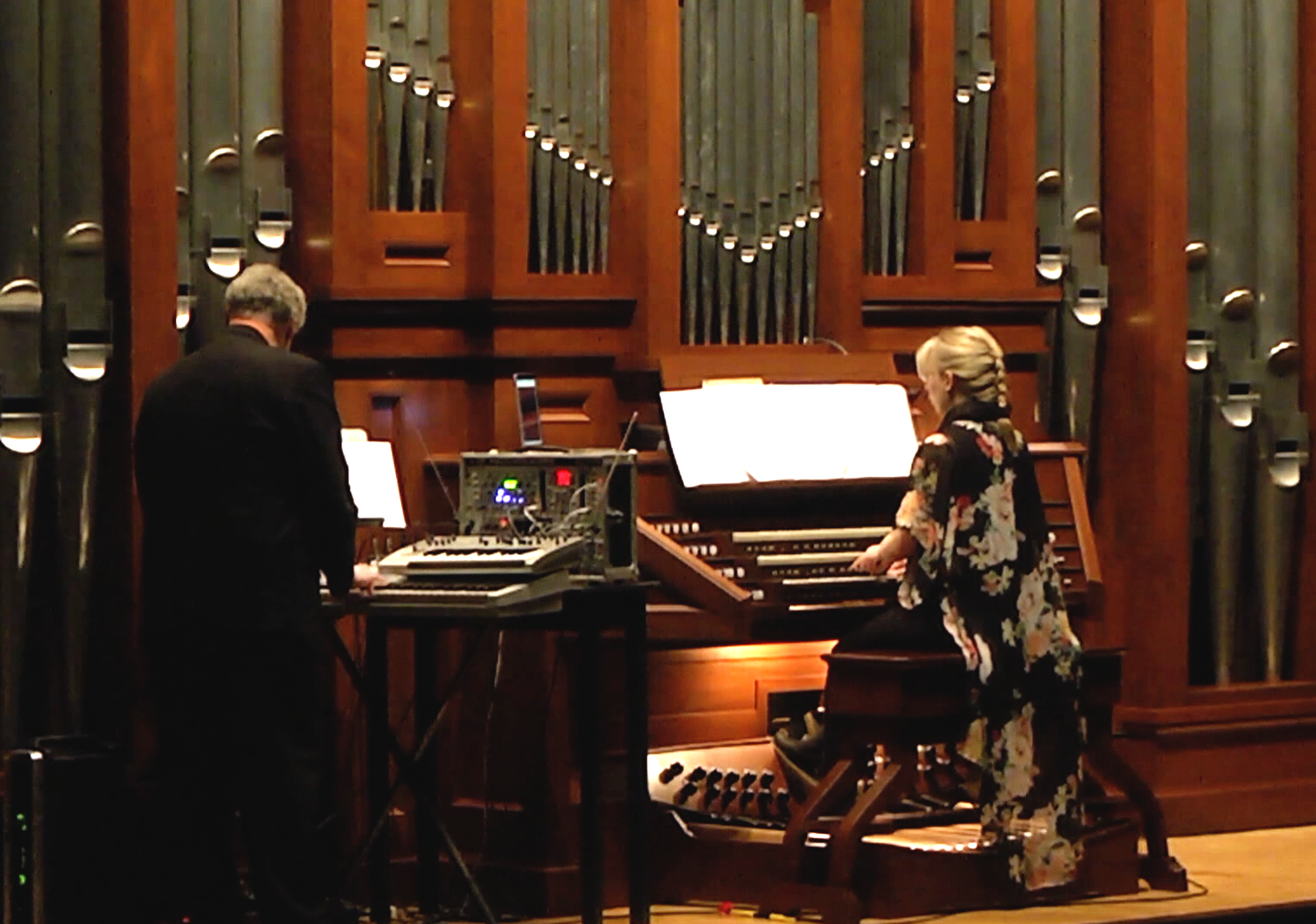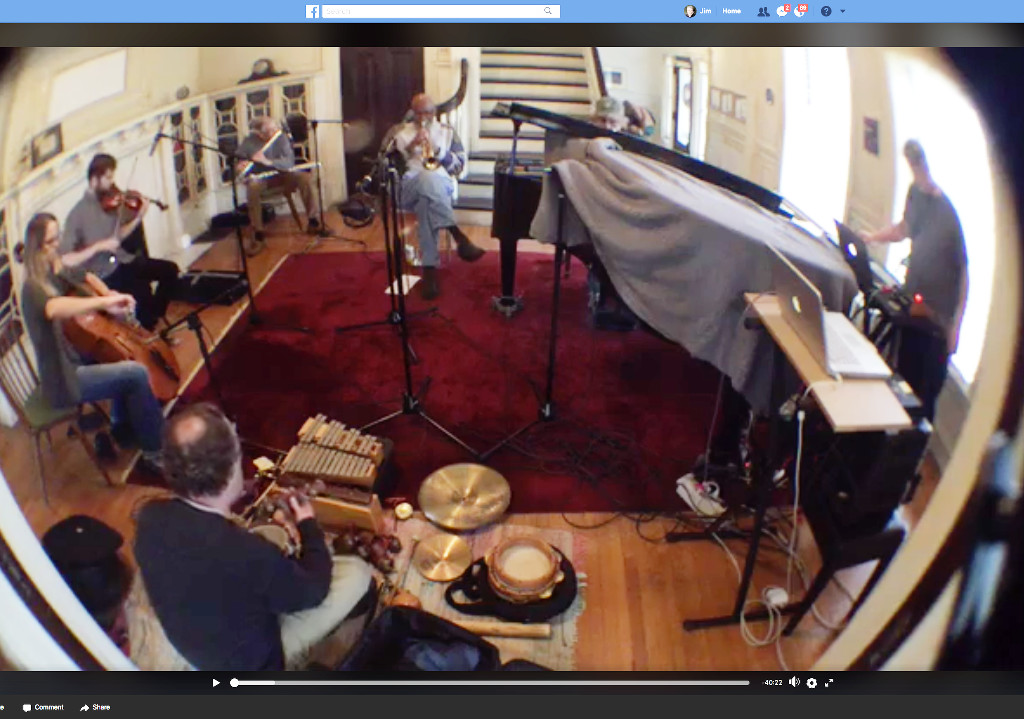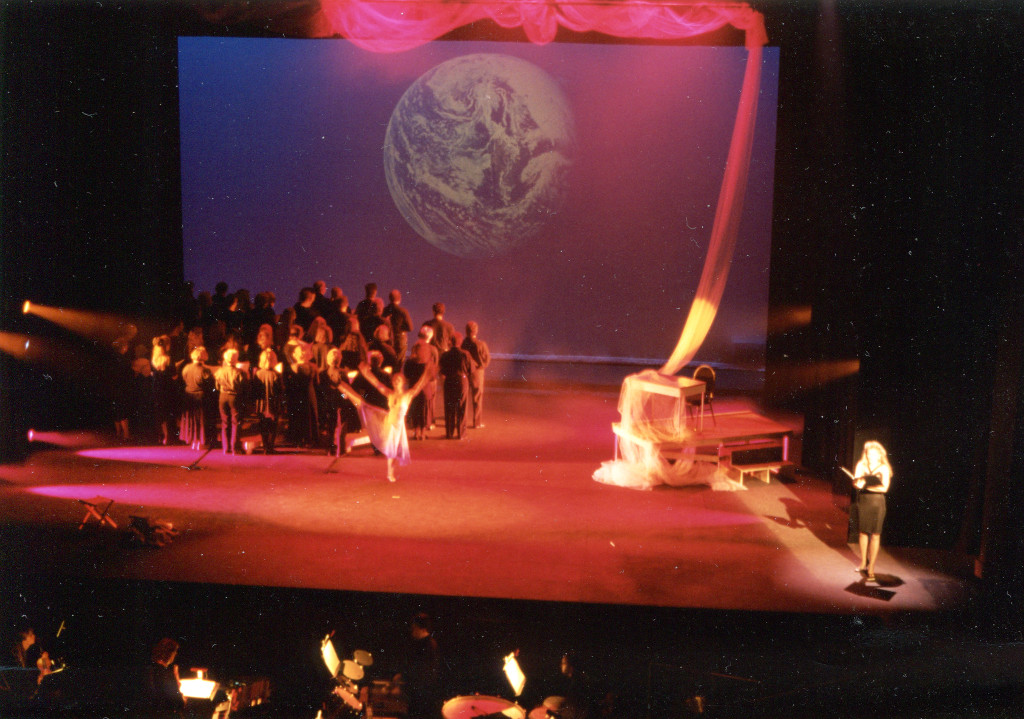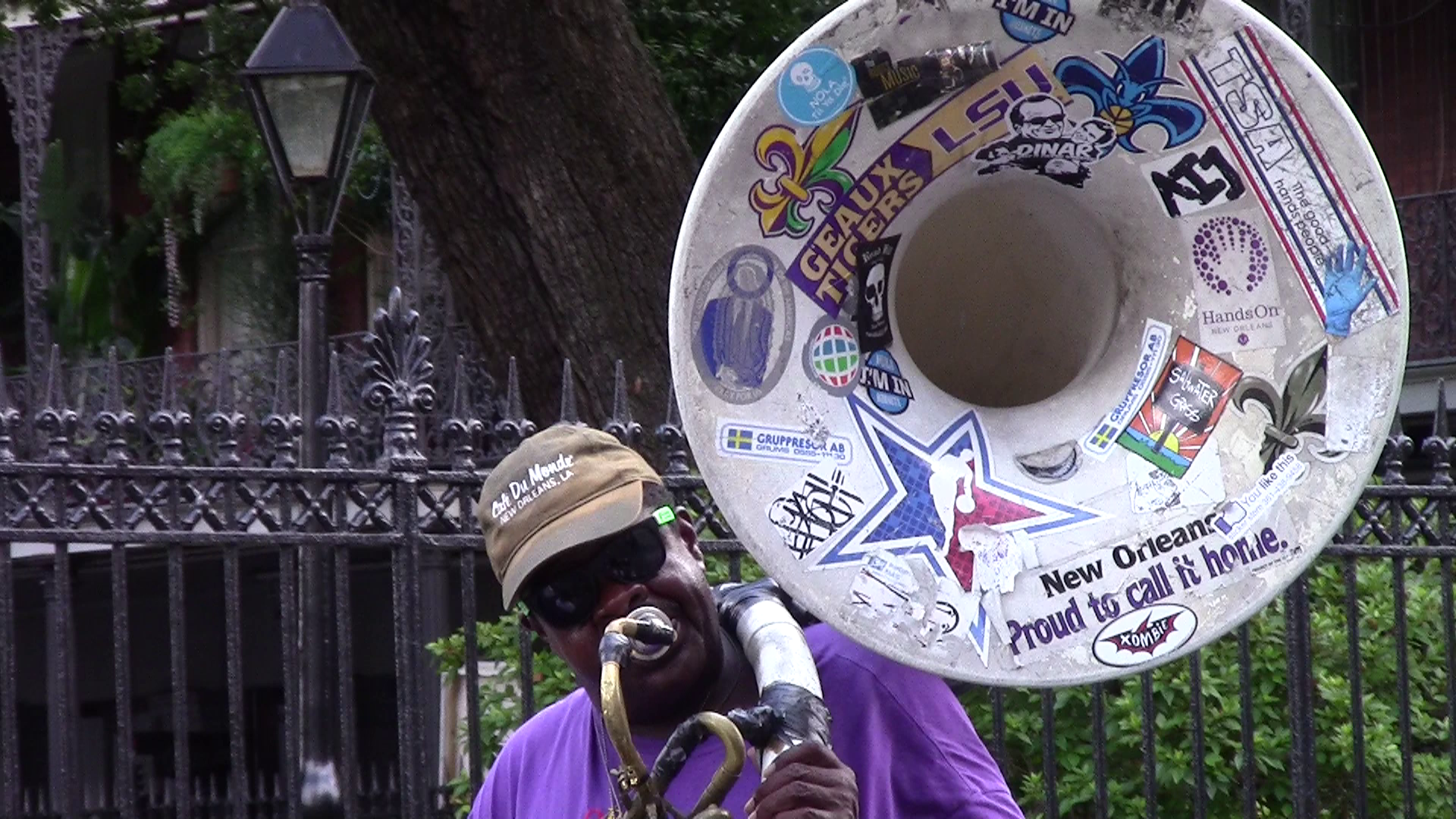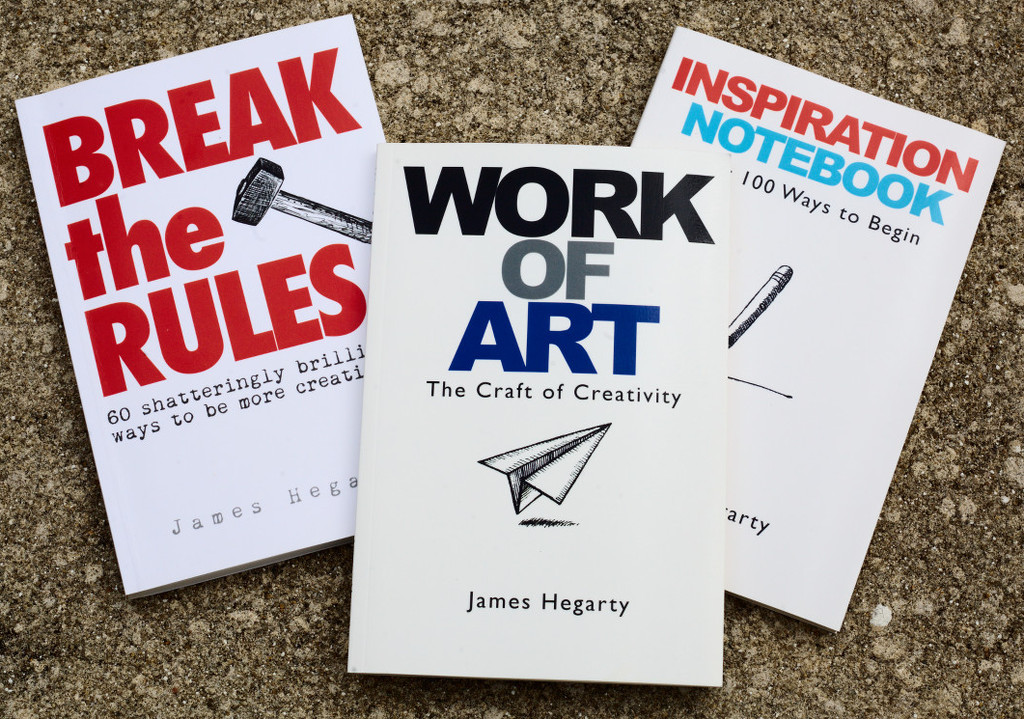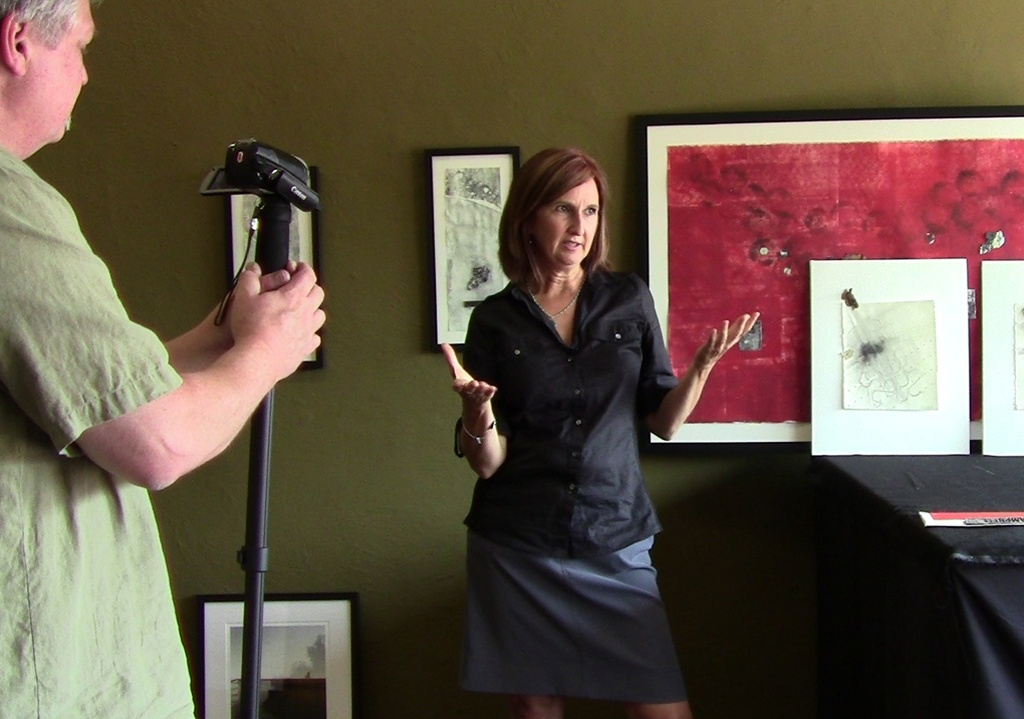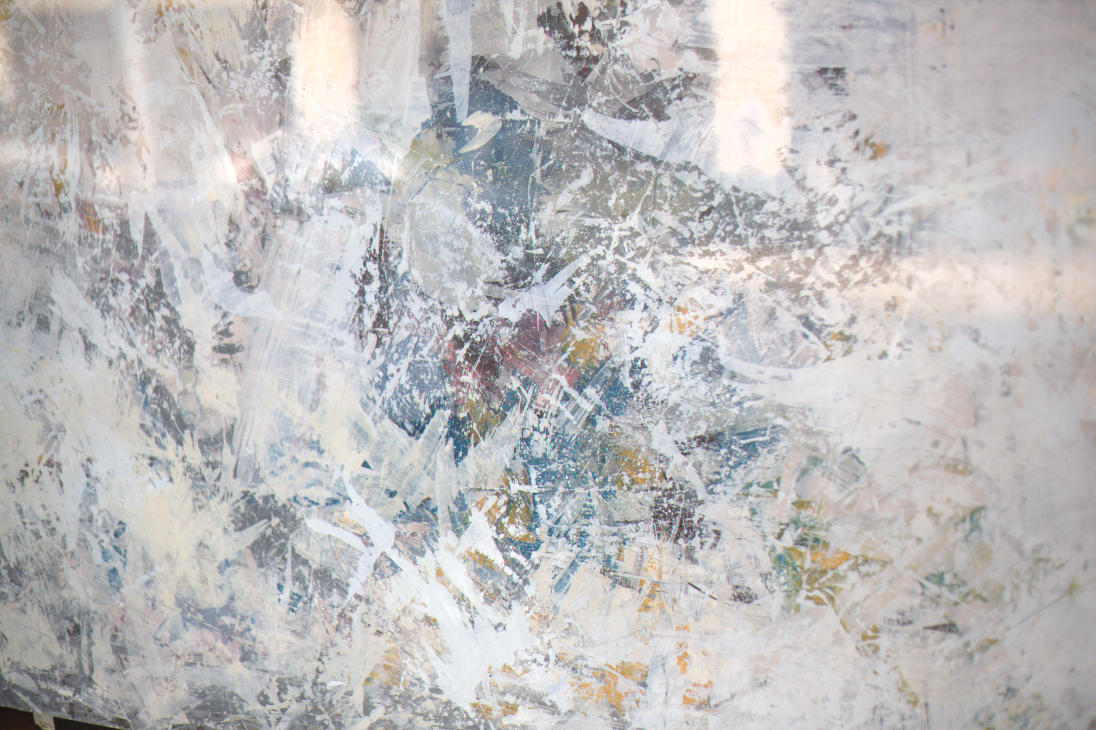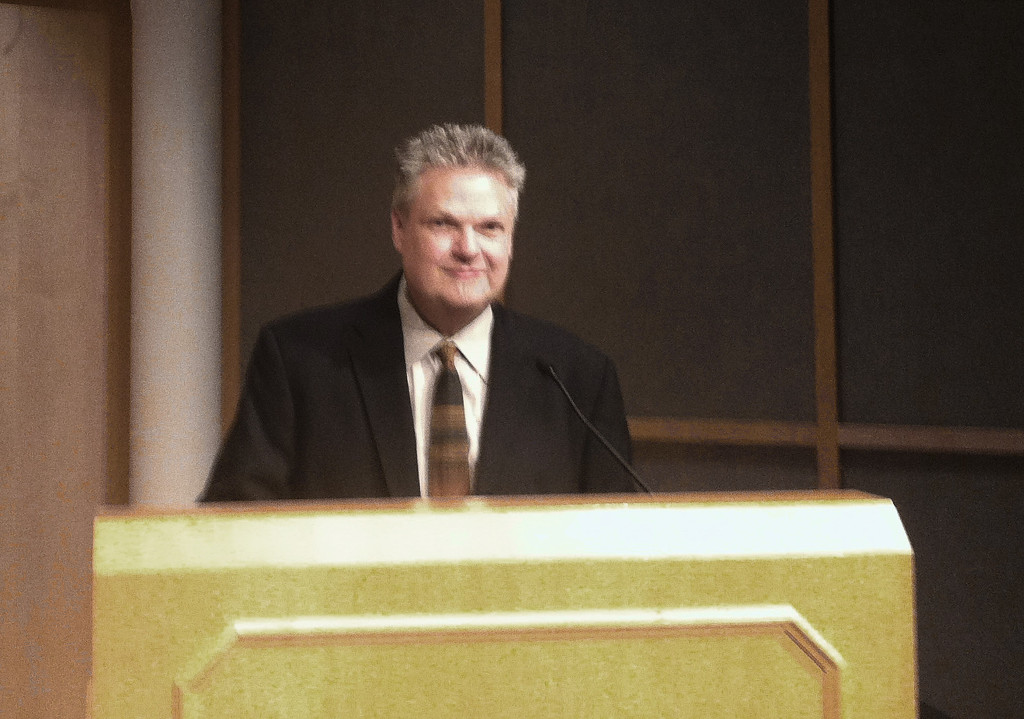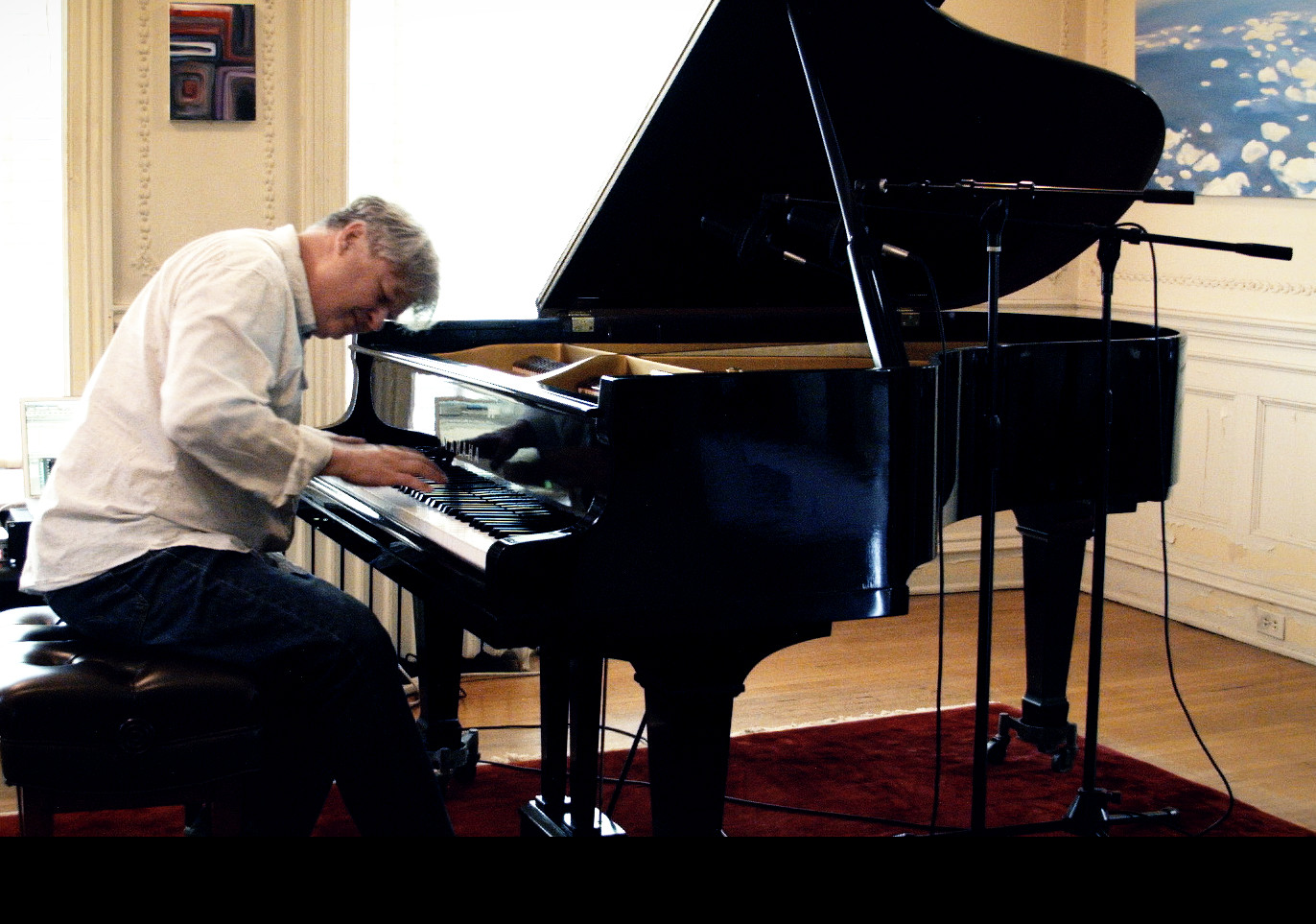Bill Evans, Half Moon Bay
September 15, 2018
Last weekend I was in Santa Cruz for the Kyma International Sound Symposium. I performed a new composition for piano, Kyma, and video on the opening concert. The work featured excerpts of a speech that Kathleen Dean Moore gave on the need for us to address global warming. Her words, though calmly spoken, are powerfully heavy. It was an opportunity to set a tone for the conference, a reminder that we need to think sustainably as well as aesthetically.
Then, on Saturday, I skipped out on the proceedings and drove up Highway 1 to San Francisco to visit my sister. She had driven up from Southern California to meet up with me and she always stays in the Outer Sunset district. So it was an easy drive straight up the coast to meet her.
Even in a rented Nissan Versa, driving that road was incredible. The hills, ocean, and fields come together in a package of natural beauty that is simply stunning to someone from the midwest. As much as we try to make the best of it, we just don’t have that kind of scenery here. So driving north with the windows open and the ocean air hitting me in the face was a truly extra sensory experience. I pulled over at a strawberry farm and bought some fruit. Fresh, organic, ripened in the sun the way it’s supposed to be. Pretty cool. I want to spend every Saturday doing this, OK?
As I drove through Half Moon Bay I enjoyed remembering that several years ago, my son and I had driven over the coastal range to try to track down the Bach Dancing and Dynamite Society. Without an address, I couldn’t find it. But I did find a music shop and I went in to ask if they could tell me where it was. They did, and we drove north a couple of miles, turned towards the ocean and found it. The dynamite thing is probably true but I don’t think they’re doing it anymore. The venue used to be, or maybe still is, someone’s home on a narrow road at the top of a low bluff looking out towards the ocean. Outdoor terraces wrap around the front of the house, looking out upon the water and also inward to the stage where there’s a Steinway D, yes the big one, sitting there waiting.
On November 4, 1973, Bill Evans recorded an album here with Eddie Gomez and Marty Morell. Like every other jazz pianist on the planet I’ve always enjoyed and been inspired by Evans’ live albums. I had the opportunity to hear him live on two occasions, once in Kansas City and once in Chicago. His live recordings really capture what it was like to sit in the Cafe American in Chicago and listen to him play. I think it was probably sometime in 1979. I was working at the Chicago Symphony then.
So I’m listening to his recording, streaming it from the cloud, and I am imagining the November sun setting over the ocean and casting a golden light into a room paneled with roughhewn cedar boards, set on the diagonal in the style of a California beach house. Only it’s a lot better than that. It’s timeless and placeless.
What is beauty anyway? And in this world today, should we care about beauty at all? Often, beauty is disdained and forgotten, pigeonholed into a wimpy mindlessness of ear and eye candy that is here and gone. No. That’s not it. Beauty is still powerful and if we put a larger measure of depth, energy, and a higher level of intensity into it, we’d find that beauty is the most compelling statement we can make. We’re too often afraid that beauty will seem superficial. It is not. There’s nothing superficial about a Mahler symphony, or Evans’ recordings. They’re deep and rich and mightily strong; and that’s why they are so beautiful. That’s what we should be going for.
Santa Monica is very far from here
April 12, 2018
I’ve just returned from four days in LA. I heard a lot of great street music, as always in LA. It’s definitely a rock music town, at least along the west beaches that I know. But that’s OK with me. It just seems like the right mix of style and atmosphere.
I think most people know about the pier with its pocket-sized amusement park that always reminds me of Coney Island in miniature. And there’s certainly a hint of Brighton Beach thrown in, too. People taking the train out to the beach for the day, just to have some fun with the family or significant other, and the retired folks sitting on the benches watching it all and feeling the ocean breeze. There’s something really harmonious about the beach. The pattern of the waves, the melody of happy children’s voices, the lyrical motion of people casually hanging out, talking, contributing their own individual spice to the mix of coolness. I want my picture taken with palm trees and Art Deco architecture in the background. That’s the real me, I assure you.
So here’s the brilliant part. Taco Libre for one. $3.50 tacos to be found just steps from Ocean Blvd. They’re damn good and a lot more generously served than a meal at a taqueria in a tourist trap needs to be. Which is to say, they are doing it right. To their credit. For another, the Metro train, which was literally outside our hotel room window. It’s about a year old and what is encouraging about this is, that from my window I could look out and see 6 modes of transportation happening all at once: the light rail train, people walking, people biking, cars, busses, and the Bird electric scooters. Only the cars were using fossil fuel and quite a few were electric or hybrids. Interesting, isn’t it?
It’s happening right now. In a city where the conventional wisdom was always, “ya gotta have a car.”
I met a woman who sold her car three years ago. She lives in Westwood and takes Uber, walks, rides the bus and the light rail. Really. She told me, “it’s so much easier not to have to worry about a car.” I was looking at a palm tree and thinking to myself, “what did you just say???”
It’s been about 11 years since the last time I was in Santa Monica. Something brilliant? I’ll try. It’s more crowded, there’s way more transportation options, the architecture is slicker, the restaurants are more upscale, and the Sears store is closed – but web articles say that it will soon be redeveloped into upscale tech office space, with a landscaped roof-top garden. What happened during those 11 years? That damn great recession. But it seems like there’s energy again, and a new vision that probably wouldn’t have happened if we had kept on that old trajectory of selling grossly overpriced condos to people with little or no money. That “market correction” was pretty painful, as I well remember, but maybe a new generation is leading us into a world that just might find solutions to the environmental issues that could take us all down. We’ve got to get serious about this.
About El Angel
March 15, 2018
A short story
This journey, like most, began many years ago. I still have the artifact, a gift from my grandparents. Today it is in my office, draped across a cabinet like a tablecloth. But it is, in fact, a serape, just the right size for someone, me, to wear if I were still about three feet tall.
For some reason, it has always seemed obvious to me that I should know Mexico better.
In September of 2017 I spent five days living in a rental apartment in the Juarez neighborhood of Mexico City. Tonight’s performance grew out of this visit. It is, in some ways a cinéma vérité (or more properly, direct cinema) of my experience. This is one man’s impression of a city – an incredibly multidimensional place filled with amazing people doing very, very interesting things. Sometimes they call it CDMX, Ciudad de Mexico. I hope this performance opens a door and invites you in.
I arrived too early to check in to my apartment, so I took a walk. I ended up at a traffic circle just below the border of Colonia Juarez and Roma Norte. Mexico is a city of neighborhoods. Many began as small independent towns built on islands in a shallow swampy lake. Early in the 20th century, the lake was drained and development of the city exploded. Today, these neighborhoods, the Colonias, are packed in against each other in a megalopolis of 8.8 million people.
At the center of the traffic circle stands an unusual fountain, the Fuente de Cibeles. It depicts the goddess Cybele, the roman goddess of fertility, riding in a chariot pulled by two lions. It is a replica of a fountain of the same name in Madrid, Spain. Spanish descendants living in Mexico presented the fountain as a gift to the city in a gesture of friendship and unity.
I hung out, enjoyed the vibe, watched the cars, the busses, the people, listened to music blaring from a store sound system, walked past enticing restaurants and smelled the cooking. During my time in the city, this place became a touchstone. I kept thinking about it in the back of my mind, my first impression, coming back to me over and over. As I began to consider what I wanted to film, what look I wanted to communicate, what imagery I wanted to capture, this place drew me back.
As I was moving about the intersection shooting from various angles, someone asked me, in English, what I was doing. It was a man and woman who told me they had recently moved to the neighborhood from Houston to set up a graphic design studio. We talked a bit about the city, the scene, and what it was like relocating to a new country. It was easy to feel a part of this place, it was comfortable, relaxed, warm, and lively. The kind of place I will always love. Scene one: cool and embracing.
Another afternoon, after visiting the Museo Tamayo Arte Contemporaneo located in Chapultepec Park, the sound of flute music in the distance drew me in. Following the music, I arrived in a clearing among the trees. In the center of the clearing, a very tall blue pole reached upwards towards the sky. At the top of the pole, a man was playing a modal tune on a wooden transverse flute. The scene that unfolded was like nothing I had ever seen before. Scene two: majestic and graceful.
The Friday night of my visit coincided with the country’s celebration of Independence Day which traditionally begins on the eve of September 16. Music concerts and galas were planned in several locations around the city. The main event was in the Zócolo, the enormous square upon which the President’s residence and the Metropolitan Cathedral are sited. But in my neighborhood, the celebration was to be held at the Angel of Independence, El Ángel, a golden statue placed atop a 118 foot tall column in the center of a major intersection on the Paseo de la Reformation. Scene three: heroic and free.
The Apple Store and Other Things
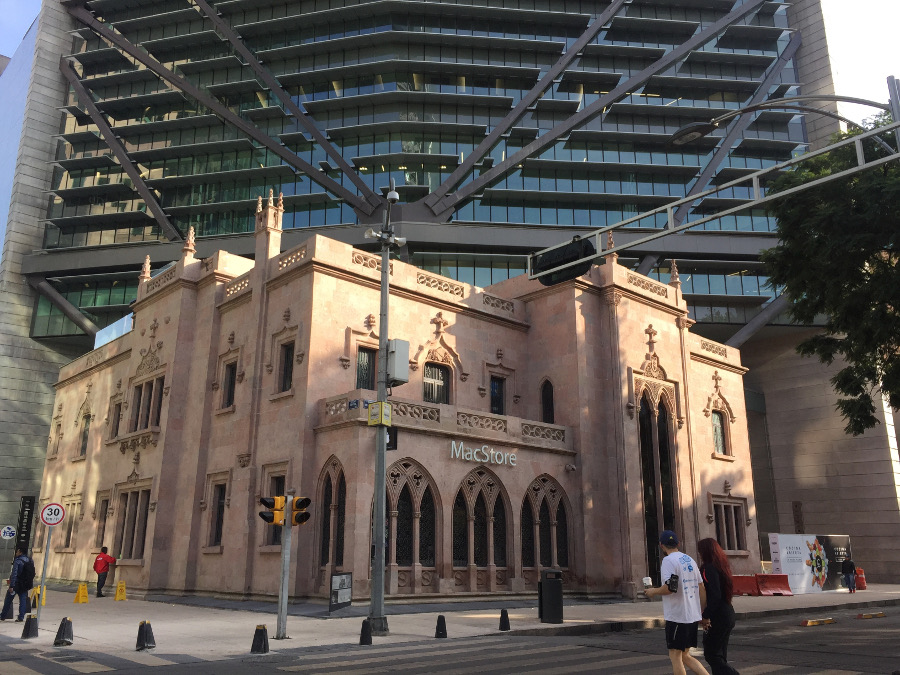
Postmodernism. For some reason, that’s the way I see things. I don’t know if it is because our world has just become such an amalgam of artifacts and references, or somehow that’s how I’m filtering/understanding things. But it hit me pretty clearly in Mexico City. In fact, I was shocked how much I learned about how I see things and the way I process their meaning. We live in a completely un-simple world. So that may be why it takes awhile to sort through stuff.
On Sunday, my last day in country, I walked to the beautiful Christian Science church. It’s painted pink with flowering vines draped around the windows. It’s a perfect example of the mixed French-Mediterranean Mexico City architectural style referred to as Porfirian, labeled in reference to the era of President Porfirio Díaz who presided over the first wave of extensive urban development at the turn of the 20th century. Just before turning down a small side street off the Paseo de la Reforma, I stopped to look in the window of the Apple Store. The building, a turn of the 20th century mansion converted into a commercial space was framed by the glass and steel structure of one of the forty-story office buildings that line the Paseo.
An awareness of old and new had been simmering throughout my visit. The Metropolitan Cathedral, built between 1587 and 1813 hit me pretty hard. This is the real thing, folks. Not just an early 20th century recreation, but real Spanish Baroque architecture. An artifact of the Colonial era, but the real thing never-the-less. As I walked through the Colonia Centro, the old city, contemporary boutiques occupied retail spaces in authentic Baroque and Classical era buildings. The mix of a tangible past with contemporary life was everywhere. Mid-century modern, eastern bloc minimalism, the late romantic Porfirian style, all blended with the boutiques and restaurants of a hyper-modern urban scene.
Organ and synthesizer, two cutting edge means of musical expression connecting across time and context. Just as walking down the Calle Madero in Mexico City blew me away with the realization of the immediate presence of hundreds of years of history in one swirling interconnected sopa of flavors, shapes, textures, and references, the music that began to form in my ears reached out to capture the essence of multiple centuries and touched upon time as transcendent.
It is up to the artists, the architects, the builders, the planners, those with vision to see, not the juxtapositions, but the connections that form the basis of relationships. Metaphorical Lego blocks that come together in unforeseen ways that ultimately build bridges and forge links across distances, that comingle aesthetics and methods, that demonstrate the universality of ideas and the potential of implementation that comes about when distinctions, borders, differences are rendered irrelevant.
The music tonight is not classical, baroque, electronica, house, techno, electro-acoustic, minimalist, or ambient. It is music that dissolves the artificial borders of division and seeks to discover what just might be possible otherwise, when there are no boxes holding ideas in isolation and no lines that can’t be crossed.
Discover a place without borders, without the distinctions of style or expectation – or false assumptions – and there is beauty there. This is a place of freedom and hope, discovery, and the joy of life lived in open hearts.
===
HSR at Principia College
February 20, 2018
Time is a strange aspect of existence. I clearly remember fragments, artifacts, from decades ago, yet the mundane assortment of nothingness that transpires in an ordinary day, yesterday, or last week, is completely forgotten. Already. What makes something memorable? What makes art impactful and lasting? Will you remember the music we perform tonight at all? What can I do to make that so?
Is the impact of memory even a valid criteria of value? Perhaps. I remember a performance of Beethoven’s Fifth Symphony performed by the Chicago Symphony Orchestra, where I worked in the early 1980s, that was conducted by Carlos Kleiber. The performance was notable – both at the time and in retrospect – because he took the tempos really fast. He claimed to have autograph manuscript proof of Beethoven’s never-before-known revised metronome markings. And Kleiber stuck to them. Was it authentic? I can’t answer that. I did not see the manuscript. But I will say that the performance was exhilarating and memorable!
Which, in a circuitous way, leads me to postmodernism which might be loosely defined as the combination of idioms and genres juxtaposed across historical and cultural contexts. In a narrow way, it might just seem to be revisionist history that allows anyone to just throw everything away and do whatever one wants with whatever is available, just do it. After all, life in the matrix of interconnectivity today give us all instant access to any little fragment of history on a cell phone. It’s one gigantic salad bowl of references and mash-ups that anyone, literally anyone, can dip into and serve up in any kind of form. We’re all mix masters, we’re all video producers, and ever since laptops could record or playback music (which is so last century), we’re all music producers, if not musicians ourselves.
So isn’t it a hard thing to contemplate, spending years getting good at explaining the nuance of common practice theory to an audience of students that grow more and more restless at its irrelevance year after year? It is a sign of my times, that is certain, that the pursuit of knowledge was worth all that effort back then, only to arrive at now and discover that, like Ai Weiwei, postmodernism picked up the figurative Han Dynasty urn of three or four hundred years of compositional technique only to dash it on the floor in thousands of tiny dusty fragments.
On a bad day, this is where I think we are. As my colleagues Dinah Ryan and Chris Yong are exploring in this semester’s Annenberg Scholar project, how do we approach “Moral Discourse in a Post Truth World”? Are we dashing literally everything we value as a culture and as a people onto the floor and letting it turn into dust?
Let me paraphrase their approach into something directly related to this evening’s performance: how do we create relevance, music that makes an impact, music that has value, in a postmodern, post-value musical world? Does anyone take their work seriously anymore? Why should we? Everything has about a 24-hour shelf life. The reason I’ve never written a symphony is because I’d spend a year doing it and then some orchestra would play it. Once. And it would become what Jacob Kohut, my friend and former composition student, very accurately referred to as “music for the drawer.”
In a post truth world, will we no long pursue truth? In a post value musical world, will we no longer pursue value? I hope not. I don’t think that meaning and value in music will end, just as I do not believe truth will end.
We will find new ways to express truth and we will find new ways to express value in the arts.
Tonight is an attempt to explore one way of achieving value in music in a post-value world.
Finding value in the music tonight is going to require a leap of faith. The biggest hang-up for most people is the dichotomy of spontaneity against depth or rigor. Deliberation, or the test of time, lends gravitas, it might seem. It is an easy slight to say that improvisation can never rise to a standard of excellence because there is no deliberation, no process of analysis, reflection, revision, repeat, repeat, repeat.
Improvisation works in an entirely different way. There really isn’t any commonality of trajectory towards the standard of excellence in the two forms. The idealized methodology that results in depth and rigor in scored music just wouldn’t work in the real-time creation of improvisation. The depth and rigor has to come from somewhere other than the deliberative process. Or a different way of applying deliberation.
Excellence in improvisation is possible and it is accomplished through deliberation and depth. The methodology is different but the result is similar. In scored music, it is the process of self-editing that returns the clarity, strength, poignancy, and integrity that we appreciate as the results of depth and rigor. In the improvisation process, the editing takes place in consciousness, sensitivity to the moment, and the sheer hard work of practice. Truly powerful improvisation, the kind of musical statements that communicate the same depth of power, clarity, and poignancy we appreciate in the best scored works, is the result of mastery of expression, the nearly instantaneous ability to realize an idea through the instrument in the very moment it is heard mentally and envisioned as vital to the ongoing collective musical statement. Just as we converse in real-time and we explore ideas with levels of verbal articulation, so improvisation draws upon a foundation of tested ability in the articulation of musical ideas in the moment they are needed. The deliberation is in the ability to parse ideas in real-time, test potentials and arrive at the necessary musical statement, all in the time it takes to blink. Improvisation is critical thinking in hyper-speed and exceptional expressions of the medium are highly energetic and intensely focused. This is the rigor. There is no mental activity that even comes close to approximating the intensity of focus that is going on in this kind of performance. I encourage you to try to listen as intensely.
]
It’s a big ask, I realize. In a postmodern world, experiences are packaged, juxtaposed, neatly framed and categorized. And there’s a feeling that too much attention is a bad thing, it give too much importance to something that will be gone in an instant. Why get so attached to something that’s just going to vaporize the minute you look away? Value or meaning in a Postmodern world just might seem totally unnecessary. Don’t dig too deep, something new will command attention in the next moment.
Which means that it is fair to assume the result of improvisation and composition aught to be something in the neighborhood of musical sound with a context that would imply approximately the same outcome. Use musical instruments, play music, listen, recognize what you hear as some kind of coherent communication.
Unfortunately for many listeners, free improve seems to jump off the track. The result is not what most people expect to hear. The meaning alludes them, the textures and timbres stretch their standard of context – that’s not music. Common points of reference are obscure and in a post value world it’s just too hard to dig below the surface to find connections. Unfamiliarity breeds contempt, I’m afraid, at least in the arts and maybe in academia as a whole.
I blame postmodernism even though it is me. My first postmodern composition was my multimedia opera, PeaceOpera: The Soul of the Rock composed in 1994. Drawing upon fragments – disembodied artifacts of world piece and non-violence told through primary source material, it was a hyper-collage of text and music. No one called it postmodern at the time, it wasn’t something we realized was an “ism” yet. During the next seven years I composed and produced a series of postmodern multimedia works at my former institution, St. Louis Community College at Forest Park. Then after coming to Principia, there was no support for this kind of thing and my process went underground for over ten years.
Recently, I thought about coming out again. Last year’s “Intersections” that featured a collage of musical content written or improvised by members of the advanced recording class was a peek out of the darkness. The work, if you saw it, featured a continuous underscore of synthesized sawtooth wave patterns and a video backdrop of three 8×14 foot rear projection screens displaying real-time images of international locations from live web cams on the internet. Streamed in real time with glitches and frozen frames included for no extra charge. Did anyone realize how monumental that was? Maybe someone did. I did. The music the students made was exceptionally good and the blending of musical and electronic elements was smooth and transparent, completely disguising the complexity of the technology.
This year, I’m hitting it again. Three times. Tonight is part one. Part two happens on March 15th when organist and professor Dr. Rose Whitmore and I perform El Ángel, a work for organ, synthesizers and video built entirely of a multitude of references framed against the vernacular of yet again, sawtooth wave synthesizer sequence patterns, the fabric of our time. Then the advanced music production students will perform a concert of their work in the Black Box Theatre on March 27.
It’s tempting to argue that postmodernism is eclecticism, or deconstructionism, or just a blatant disregard for cultural continuity or historical reference. It’s tempting to think of postmodernism as a negative reaction to the formalism of the long period of post-romantic expressionism that gradually morphed into just a slightly different flavor, the individualized subjectivity of pop art. In the early 1990s, Dr. James Phelps, my computer music teacher, introduced me to deconstructionism. It works. Selective or arbitrary rearrangement of content often does generate fresh perspectives. The use of random number generators in computer music, even when constrained by algorithms, can occasionally suggest something interesting. But do the random thing long enough and randomness just starts to sound or look just like any other randomness. It was cool for the first maybe one hundred or so iterations, but then it just became another predictable idiom no more or less recognizable than the blues.
Yes, idioms. So is this jazz or what? Somewhere in the salad bowl of postmodernism, groups like the Art Ensemble of Chicago and Sun Ra started to consciously blend musical riffs from a variety of musical styles. Growing up in the world of jazz and blues and R&B and rock meant there were a lot of references – artifacts – floating around the ether of musical exploration. And sometimes things got thrown together that didn’t really come from the same cloth. So be it. Idiom, or the tropes of genre intermingled and cross-influenced. And idiom became a tool of the language of expression. To the point that eventually idiomatic references became so blurred, so mixed-up, that the concept didn’t even seem necessary anymore.
And idiom, genre, references, artifacts, became the vocabulary, the means of expressing a vast continuum that embraces a far-reaching sense of possible relevance. In the spirit of exploring relationships and making connections, of developing meaning and value across a vast continuum of shared experiences.
What works for me is a combination of non-idiomatic intent with the concept of collage reference of artifacts juxtaposed in new and hopefully curious ways. As in “Intersections” where video images of people separated by vast distances, for example the frame of London’s Eye and Moscow’s Red Square, simultaneously in real time seems like a curious juxtaposition of reference and artifacts. The actors are completely unaware of each other and have no context for their interconnectedness. The meaning is in the eye and ear of the beholder and we bring our own references, artifacts, to bear. As we sat in Davis Music Hall, watching the scene unfold, we become a part of the collage. It is our activity of watching that “con-structs” the work and gives it meaning.
So tonight we will explore the postmodern notion that history is not the frame that shapes meaning, that references to known or shared artifacts – idioms and genres – can be divorced from their previous meaning or context by the fashioning of them into new shapes and relationships, that the question of improvisation as a rich and deep form of expression is viable and expresses value when approached on its own terms rather than the expectations of deliberative music, and that the isolated artifacts of other times and places (the tape loops) take on new relationships and meaning when we see and hear them in the context of our own immediate continuity – all of this just might be the ingredients for something interesting. And maybe the music will have value.
Postmodern elements in this piece:
Fragmentary and deconstructed jazz heads
Audio of three generations of women activists expressing views of equality
Jazz riffs sampled from vinyl interject historical artifacts into a new context
Basic synthesized audio waves performed with a tablet extend and distort the parameters of timbre, pitch, and instrumental performativity outside the traditional bounds of the jazz idiom
Technologically mediated performance is juxtaposed against an acoustic genre
So, one more time, is this jazz?
Maybe, but the lines are intentionally crossed or erased which leaves the markers of genre and idiom blurred, obscured, or even absent. I don’t know. But if you asked nearly any jazz musician if his or her music is jazz, most would say, no – it is just music. Creative, innovative ideas are what Ellington referred to as “beyond category.” I’m willing to let the music be music, to spin a collection of references and artifacts and conjure it’s own meaning. For me, that’s the architecture of musical experience. Open the door, enter the space, and discover what’s there. I’ll be listening.
===
The HFR Trio recording at Systems Two in Brooklyn
October 9, 2017
There is something about place that matters, I think. Musical ideas seem to be connected with architecture, images, a particular atmosphere, or even just a crossroad of some kind, mental or physical. Looking ahead or looking back, these intersections evolve and transpire through the relationships and connections that happen in time and space (to reference an earlier album, if I may). But i don’t think it is unusual to think about purpose in this way. I try to avoid outlines and preconceptions and keep my eyes and ears open for the moment, whether it is a photo on the street, or from one instance to the next in music.
There is a very large room (a big room, to draw upon historical reference) where ideas have the space to roam free and explore, where one can dance with arms outstretched and not smack into anything. I like that. Maybe its because for all my life except the last five years, I’ve lived in very small spaces. The walls get in the way.
But in a trio, I don’t feel like there are any walls at all. There’s room to reach out, cross over, work an idea, and it all comes together in time and space. For me, in most every way, a trio is the perfect place, the ideal crossroad. Like the image on the cover, it is both physically and inspirationally a unique place, the intersection of Ditmas Avenue and McDonald, under the elevated. That’s where cool stuff happened that day.
Del and I have recorded before, we’ve gigged at the old Tavern of Fine Arts, but it has been a few years. We’ve both traveled roads of our own. Michael and I had never played together before but one night after a Thumbscrew gig we talked about music and teaching and maybe a couple of other things. I knew at the time it would be awesome indeed if I could ever jam with him.
Years passed as they often do and then some funding materialized as a result of Jonathan’s larger sense of what just might be possible. A date, a time, some mini-conversations over email, and then I was stepping off the F train, grabbing a few photos as I walked to the studio.
I’ve made a lot of records, worked in a lot of studios, but this one stands out to me. As the sounds transpired through the headphones that day, i knew we were really digging deep, finding intense levels of expression and really enjoying the conversation. Listen and you will hear dialogues, interconnections, and independence, three voices at a crossroad, simultaneously coming together in a fragment of time, saying something completely unique and entirely spontaneous. No scores, only a suggestion to explore atmospheres, melodies, and patterns. Mix it up. Now let’s play!
===
Say Something Brilliant
August 9, 2016
For five years I played in an avant-garde music ensemble that had a monthly gig at a local venue here, the Tavern of Fine Arts. The last Thursday of every month, except for some Novembers and Decembers when the holidays messed with our dates, we were there.
A regular gig is a wonderful and priceless thing. Each month I’d go on the local media outlets’ websites and submit our calendar posting. Aaron, a co-owner of the venue, would put up a Facebook page and we’d share it with our peoples.
Each month, we’d get to the gig and miraculously, an audience would appear. Sometimes the band members and their significant others would outnumber the civilians. And a few times the place would be full. And on most months, it was somewhere in between.
Sometimes I would go home and think, man, there was some good playing tonight. Too bad hardly anyone heard it. But thinking about “what if” starts a chain reaction and pretty soon I’m thinking about maybe I should have joined a blues band, instead. Surely, according to my contorted logic, people would come out in droves for blues, wouldn’t they?
Recently my wife and I were spending a relaxing week in Moss Beach, California. It’s a small community on the ocean in the Bay Area. The guy who owned the AirBNB where we were staying was a guitar player and we were talking a bit. He mentioned he was playing an open mic that night. Cool. So we decided to go check it out. A place called Cameron’s in Half Moon Bay. Could be fun, hear some local musicians gettin’ their groove on.
So we get there about 10pm and his band is about to hit the stage. They’re a trio, two guitars and harp (as in harmonica). The guy’s got a Shure Green Bullet microphone, the quintessential blues harp mic – you’ve heard it on, like, every recording in the world. So this looks promising. And they were cool.
But the moral of this story is, aside from my wife and me, and the other people lined up to play that night, there were maybe four other people in the place.
So I’m thinking to myself, if it had been me up there playing, would I have gone home afterwards and gotten all moody about the puny audience. Which would have got me thinking that if I had been playing free improv instead of the blues, a whole lot more people would have shown up to listen? After all, free improv is really cool, right?
===
Say Something Brilliant
August 31, 2015
I’m thinking about recording a new album. Solo piano. It will be free. How do you plan that?
Quietly. And maybe with more than a little bit of curiosity. Sometimes I imagine a place. A city I know very well. Where I can close my eyes, spin around, and know exactly where I am when I open them. And other times, it is not a familiar thing at all.
I wanted to record in New York, for the dynamics and the tempo, one would assume. That would be understandable. Except, does it matter? And even if it did, could I transport my entire spectrum of expression into a new point of reference –momentarily, artificially?
It would be cool to try.
There is a sound that I’m thinking of, pure and clear. Almost bell-like, a texture like glass, or finely cut crystal. There is silence, a kind of joyous waiting in anticipation of the next moment; a tangible understanding of the present. You are there, listening, following along across the invisible page of imagination. All of us, together in one continuum of realizing where we are, right now. And the context and relationship of the past. A searching expectation of the future.
When the music is truly free, without determinate structures, frameworks, prompts, score fragments, the real beauty is in the collective journey, the discovery of who we are, where we have been, and inevitably where we will be.
It is not music alone. It is breathing and laughing, holding and looking, on a deeper level.
Here in St. Louis, we need to do this more.
===
Thinking Brooklyn
July 28, 2014
Ok, I’m not an expert. I don’t live there. All I know is what I’ve seen. A couple of times.
I’m not going all Travel Channel or anything. But I remember Soho before the shoe stores. I remember the loft galleries and the raw spaces. I remember the hanging tapestries that separated one gallery space from another. And I remember River North in my hometown of Chicago at a time when there was nothing there except run down warehouses. Seriously.
Once my wife and I had an opportunity to buy a house in Chicago’s Bucktown for $5,000. In fact I think the guy would’ve given it to us if we’d agreed to sign. What would it be worth today? Well, let’s just say I wouldn’t need to be working every day for a living at this point.
Interesting.
But this isn’t about real estate speculation. It’s about creativity and inspiration. So when I spent some time in Brooklyn a couple of weeks ago I wanted to see if there was something going on there that was either A) inspiring or B) creative. I was looking for a Brooklyn perspective on doing stuff.
So what did I find? Signage is just not cool, man. The best places I went to, as in really interesting food, looked so nondescript that if someone hadn’t told me it was awesome I would have just been completely disinclined to go in. Then, once inside, it was like a different world, the place was happening – lots of cool looking people, music, sounds, smells.
Maybe I’ll call it the Roberta’s syndrome because for me a few years ago, that was the first. For someone from Chi to say that was one of the best pizzas I’ve ever had is saying a lot. And it was. But what sticks even more in my head is the remoteness of the place and the complete lack of overt notification on the building. Yeah, there was a sign. And a metal door IIRC.
So what’s the take away? The easy answer would be that in the world of Twitter and FB and Instagram who needs signage or old-school methods of communication? Who needs golden arches anymore? If the place is cool, the food is amazing, and people have a good time there, they’ll tweet about it. And enough people will find the place to turn it into a legend.
So now we’re all chasing a tweet, or trying to go viral on YouTube. This isn’t really new either, is it?
So did I discover anything new at all? Yes. I found out that what’s really going on there is the evolution of a new sense of community. Sit in Irving Square Park for even a few minutes and you’ll get it. Families, couples, kids, dogs, a woman with a guitar, all hanging out and enjoying a summer evening – together. Walk down the street, day or night, and there’s an openness that belies the stereotype of a city like New York.
You know, if we’ve made any progress at all, it is this: we are slowly breaking down the impersonality of a commodified life and building real personal relationships. It’s communication on a human level, me to you. And it’s founded on the simple fact that we are all people, living together, here. We’re not strangers, we live here. And slowly we’re starting to act like we know each other, and maybe even care about each other.
